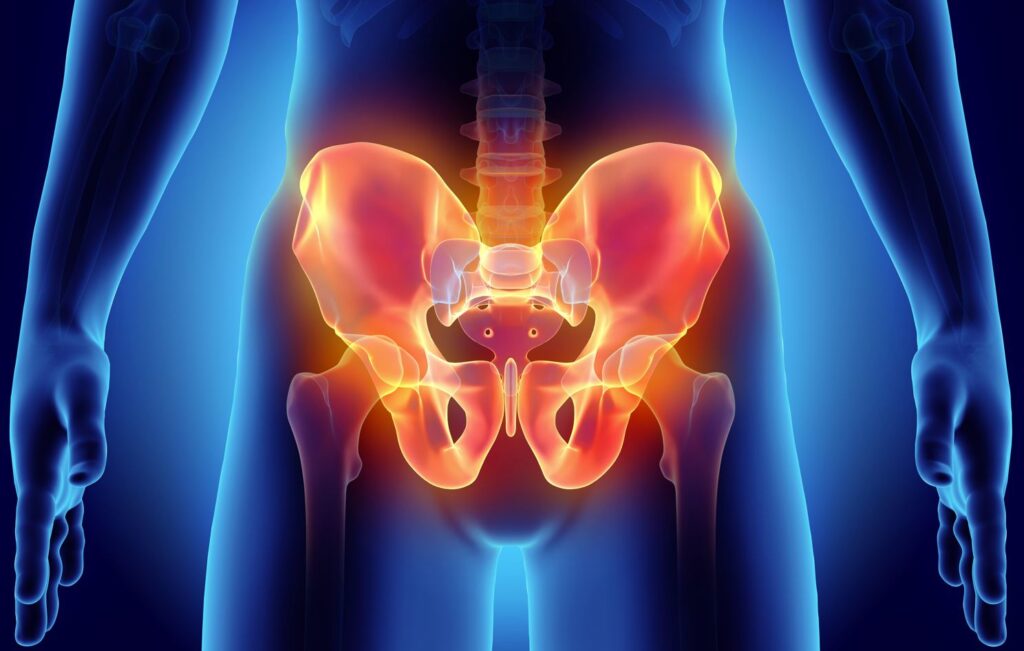Introduction
Pelvic fractures, though less common than fractures in other parts of the body, are significant injuries that often occur due to high-energy impacts, such as car accidents, falls from a great height, or severe sports injuries. They range from simple, low-risk fractures to complex injuries that can be life-threatening.
Understanding Pelvic Fractures
The pelvis is a ring-like structure of bones located at the base of the spine, responsible for supporting the body’s weight in both standing and sitting positions. It also protects various organs, including the bladder and intestines. Pelvic fractures can disrupt this critical structure and the organs it protects.
Causes and Risk Factors
- High-impact Trauma: The most common cause of serious pelvic fractures. Car crashes, falls from significant heights, and crush injuries are typical examples.
- Low-impact Trauma: In older adults, especially those with osteoporosis, pelvic fractures can occur due to lower-impact events, like a minor fall.
- Athletic Injuries: Athletes, especially those involved in high-impact sports, might experience stress fractures in the pelvic area.
Symptoms
- Severe pain in the hip or groin area
- Inability to walk or bear weight
- Bruising and swelling in the pelvic region
- Numbness or tingling in the groin or legs
- In more severe cases, signs of shock such as fainting, dizziness, and rapid heart rate
Diagnosis
Diagnosis typically involves a physical examination, review of the patient’s medical history, and imaging tests. X-rays are commonly used, but CT scans or MRI might be required for a more detailed view.
Treatment Options
- Non-Surgical Treatment: For minor fractures, treatment may involve bed rest, pain management, and physical therapy.
- Surgical Treatment: More severe fractures may require surgery to reposition and stabilize the broken bones. This could involve the use of screws, plates, or rods.
- Rehabilitation: Post-treatment, rehabilitation is crucial for regaining strength and mobility. This might include physical therapy and exercises.
Complications
Complications can include damage to the organs protected by the pelvis, nerve damage, and in severe cases, blood loss leading to shock. There is also a risk of blood clots, particularly in the legs, due to immobility.
Preventative Measures
- For athletes, proper training and use of protective equipment can minimize risk.
- In the elderly, measures to prevent falls and maintain bone health are vital.
Conclusion
Pelvic fractures, while serious, are treatable injuries. Recovery depends on the severity of the fracture, the patient’s overall health, and the effectiveness of the rehabilitation program. It is essential for individuals with a pelvic fracture to closely follow their medical provider’s advice and engage in prescribed rehabilitation activities to ensure the best possible outcome.
